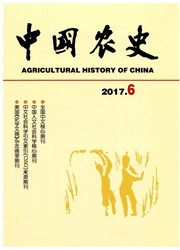

 中文摘要:
中文摘要:
基于MODIS、Landsat-8 OLI和HJ-1A/1B CCD卫星遥感资料,结合2013-2014年甘南州夏河县桑科草原试验区野外实测数据,建立了高寒草地地上生物量遥感反演模型,筛选出基于不同遥感资料植被指数的生物量最优反演模型,比较分析了生物量最优模型的空间效应。同时,分析了2000-2013年基于MODIS植被指数估算的试验区产草量的年际变化特征。结果表明,草地生物量最优反演模型为基于Landsat-8 OLI NDVI数据的对数模型(y=727.54lnx1+495.23,R2=0.772,RMSE=31.333 kg DM·hm-2);在30和250 m空间分辨率下,基于MODIS NDVI及EVI、Landsat-8 OLI NDVI和HJ-1A/1B CCD NDVI最优模型估算的生物量均高于实测生物量,其中Landsat-8 OLI NDVI数据估算的草地生物量与实测生物量值最接近;2000-2013年试验区草地总生物量整体上具有显著增加的趋势(R2=0.590 7,P〈0.001),平均增加速率达50.57 kg DM·hm-2·a-1。
 英文摘要:
英文摘要:
Based on the remote sensing data of MODIS,Landsat-8 OLI and HJ-1A /1B CCD combined with ground observation data during 2013 and 2014 in the experimental area of Xiahe County,Gansu Province,the alpine grassland biomass inversion models were established and evaluated,and the best inversion models based on different remote sensing vegetation indexes were selected. Meanwhile,the spatial and temporal variations of grassland biomass in experimental area from 2000 to 2013 were also analyzed. The results showed that the best grassland biomass inversion model was logarithmic function of Landsat-8 OLI NDVI data( y = 727. 54lnx1+ 495. 23,R2= 0. 772,RMSE= 31. 333 kg DM·hm- 2). With spatial resolution of 30 m and 250 m,estimated biomass based on MODIS NDVI,MODIS EVI,HJ-1A /1B CCD NDVI and Landsat-8 OLI NDVI,were all higher than ground observation biomass.The estimated biomass based on logarithmic function of Landsat-8 OLI NDVI was the most close to observation biomass. The total biomass in the experimental area had great changes from 2000 to 2013. As a whole,the total biomass of grassland has a significant increasing trend( R2= 0. 590 7,P〈 0. 001) from 2000 to 2013,and the average increasing rate reached to 50. 57 kg DM ·hm- 2·a- 1.
 同期刊论文项目
同期刊论文项目
 同项目期刊论文
同项目期刊论文
 期刊信息
期刊信息
